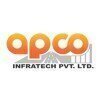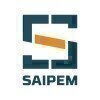Filter interviews by
Phenix Construction Technologies Diploma Trainee Engineer Interview Questions and Answers
Phenix Construction Technologies Diploma Trainee Engineer Interview Experiences
1 interview found
I applied via Campus Placement and was interviewed in May 2024. There were 2 interview rounds.
Technical questions is asked in aptitude whic is based on steel part
(2 Questions)
- Q1. What is Load? and define loads
- Ans.
Load refers to the external force acting on a structure or component.
Load is the amount of force applied to a structure or component.
Types of loads include dead loads, live loads, wind loads, and seismic loads.
Dead loads are permanent loads like the weight of the structure itself.
Live loads are temporary loads like people or furniture.
Wind loads are forces exerted by wind on a structure.
Seismic loads are forces caused ...
- Q2. From the hobbies the interviewer asked you questions
Interview Preparation Tips
Top trending discussions






Interview questions from similar companies

Interview Questionnaire
1 Question
- Q1. Hard core techanical

Senior Engineer Interview Questions & Answers
L&T Energy Hydrocarbonposted on 11 Apr 2021
I applied via Walk-in and was interviewed before Apr 2020. There was 1 interview round.
Interview Questionnaire
6 Questions
- Q1. Can you explain Man day
- Q2. Can you explain manpower mobilization.
- Ans.
Manpower mobilization refers to the process of deploying and managing personnel for a specific project or task.
Identifying the required personnel for a project
Recruiting and hiring personnel
Training and orienting personnel to the project
Assigning roles and responsibilities to personnel
Managing personnel performance and productivity
Ensuring compliance with labor laws and regulations
Examples include mobilizing a construc...
- Q3. How to cost control in project
- Ans.
Cost control in project can be achieved through effective planning, monitoring and controlling of project expenses.
Create a detailed project budget and stick to it
Track expenses regularly and adjust budget as needed
Identify and eliminate unnecessary expenses
Negotiate with vendors for better pricing
Implement cost-saving measures without compromising quality
Use project management tools to monitor expenses and progress
Reg...
- Q4. Can you explain how to handle clinent
- Ans.
Handling clients requires effective communication, understanding their needs, and providing timely solutions.
Listen actively to their concerns and requirements
Communicate clearly and professionally
Provide timely updates and solutions
Build a strong relationship based on trust and respect
Be proactive in identifying and addressing potential issues
Ensure customer satisfaction by going above and beyond expectations
- Q5. Flow chart for manpower mobilization
- Ans.
Manpower mobilization flow chart involves identifying needs, planning, recruitment, training, and deployment.
Identify the need for manpower
Plan the recruitment process
Source and screen candidates
Conduct interviews and assessments
Select and hire candidates
Provide training and orientation
Deploy manpower to required locations
- Q6. Prepared organisation chat for project handling
Interview Preparation Tips

I applied via Job Portal and was interviewed before Dec 2021. There were 3 interview rounds.

(1 Question)
- Q1. Control valves on-off valves
(1 Question)
- Q1. PSV pressure regulators
Interview Preparation Tips

I applied via Approached by Company and was interviewed before Nov 2022. There were 3 interview rounds.

(2 Questions)
- Q1. Basics of what ur past experience
- Q2. Basic of shuttering and concreting
(1 Question)
- Q1. What u r past experience
Interview Preparation Tips
No fixed timing of work. Only top management is supportive down the line everyone is of cheap mentality. Not recommend to join the company as u will regret later. Not even cable to achieve 1 star

(2 Questions)
- Q1. Field related building materials
- Q2. Building materials
Interview Preparation Tips

I applied via Naukri.com and was interviewed in Aug 2023. There were 2 interview rounds.
(1 Question)
- Q1. Civil engineering related Questions
(1 Question)
- Q1. Salary related discussion

I appeared for an interview in Sep 2024, where I was asked the following questions.
- Q1. What a IS Code of Design Mix ?
- Ans.
IS Code of Design Mix refers to Indian Standards for concrete mix design, ensuring quality and performance in construction.
IS 456:2000 provides guidelines for plain and reinforced concrete design.
IS 10262:2019 outlines the procedure for concrete mix design.
Mix design considers factors like workability, strength, and durability.
Example: A mix design for M25 concrete specifies a ratio of 1:1:2 (Cement:Sand:Aggregate).
The...
- Q2. What are the Welding method of steel?
- Ans.
Welding methods for steel include various techniques like MIG, TIG, and Stick welding, each suited for different applications.
MIG Welding (Gas Metal Arc Welding) - Uses a continuous wire feed and is ideal for thin to medium thickness steel.
TIG Welding (Gas Tungsten Arc Welding) - Provides high precision and is suitable for thin materials and stainless steel.
Stick Welding (Shielded Metal Arc Welding) - Versatile and com...
- Q3. What are the advantage of steel shuttering?
- Ans.
Steel shuttering offers durability, reusability, and precision in construction, enhancing project efficiency and quality.
Durability: Steel shuttering can withstand harsh weather conditions and heavy loads, making it suitable for large-scale projects.
Reusability: Unlike timber, steel can be reused multiple times, reducing material costs over time.
Precision: Steel shuttering provides a high level of accuracy in dimension...
- Q4. What are the benefits of using Composite Plate?
- Ans.
Composite plates offer enhanced strength, lightweight properties, and design flexibility for various applications.
High strength-to-weight ratio: Composite plates are significantly lighter than metals, making them ideal for aerospace applications.
Corrosion resistance: They resist environmental degradation, suitable for marine and chemical industries.
Design flexibility: Can be molded into complex shapes, allowing for inn...
- Q5. How do you lay blocks in block work
- Ans.
Laying blocks involves precise techniques for alignment, mortar application, and ensuring structural integrity.
Prepare the foundation: Ensure the base is level and clean before starting.
Mix mortar: Use the right ratio of cement, sand, and water for optimal adhesion.
Lay the first block: Start at a corner, applying mortar to the bottom and sides.
Check alignment: Use a level to ensure blocks are straight and even.
Stagger ...
Interview Preparation Tips

Senior Engineer Interview Questions & Answers
URC Constructionposted on 31 Jan 2024
About site experience
(1 Question)
- Q1. Site execution technical

I applied via Referral and was interviewed in Dec 2020. There were 4 interview rounds.
Interview Questionnaire
3 Questions
- Q1. Cube Compressive achieving Percentage time periods?
- Ans.
Cube compressive achieving percentage time periods
The question is asking about the percentage of time periods in which cube compressive strength is achieved
Cube compressive strength refers to the ability of a cube-shaped material to withstand compression
The answer may involve calculating the percentage of time periods in which the cube meets the required compressive strength
Examples of data points needed: time periods,
- Q2. M20 grade and M means and 20 means and unit
- Q3. 1:1.5:3 ,M-Mix,20 -Compresive strength,N/mm²
Interview Preparation Tips
Phenix Construction Technologies Interview FAQs
Tell us how to improve this page.
Phenix Construction Technologies Interviews By Designations
- Phenix Construction Technologies Junior Design Engineer Interview Questions
- Phenix Construction Technologies Diploma Trainee Engineer Interview Questions
- Phenix Construction Technologies Customer Care Executive Interview Questions
- Phenix Construction Technologies Quality Engineer Interview Questions
- Phenix Construction Technologies Executive Interview Questions
- Phenix Construction Technologies Production Engineer Interview Questions
- Phenix Construction Technologies Senior Engineer Purchase Interview Questions
- Phenix Construction Technologies Electrician Interview Questions
- Show more
Interview Questions for Popular Designations
- Diploma Mechanical Engineer Interview Questions
- Diploma Electrical Engineer Interview Questions
- Diploma Apprentice Trainee Interview Questions
- Diploma Electronics Engineer Interview Questions
- Diploma Civil Engineer Interview Questions
- Diploma Chemical Engineer Interview Questions
- Diploma Engineer Trainee - DET Interview Questions
- Diploma Automobile Engineer Interview Questions
- Show more
Phenix Construction Technologies Diploma Trainee Engineer Interview Process
based on 1 interview
Interview experience
Interview Questions from Similar Companies
|
Production Engineer
29
salaries
| ₹1.2 L/yr - ₹5.2 L/yr |
|
Engineer
23
salaries
| ₹1.8 L/yr - ₹5.3 L/yr |
|
Junior Design Engineer
21
salaries
| ₹2.8 L/yr - ₹4.6 L/yr |
|
Senior Engineer
15
salaries
| ₹4.5 L/yr - ₹9 L/yr |
|
Assistant Manager
12
salaries
| ₹5.2 L/yr - ₹9 L/yr |

AECOM

L&T Energy Hydrocarbon

Apco Infratech

Saipem
- Home >
- Interviews >
- Phenix Construction Technologies Interview Questions >
- Phenix Construction Technologies Diploma Trainee Engineer Interview Questions











